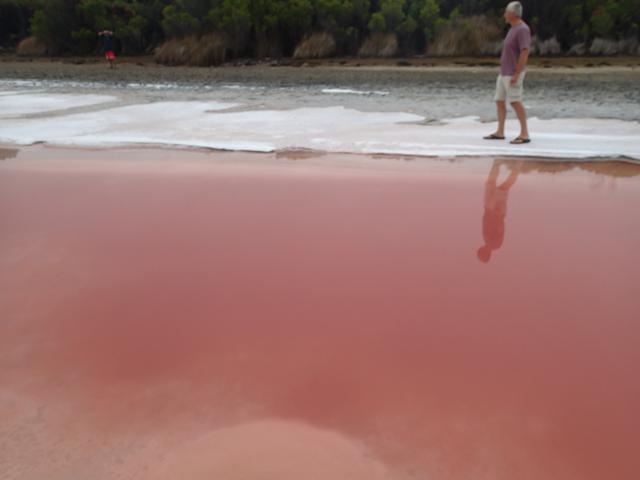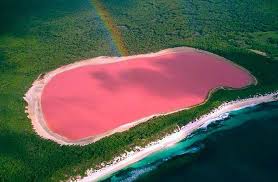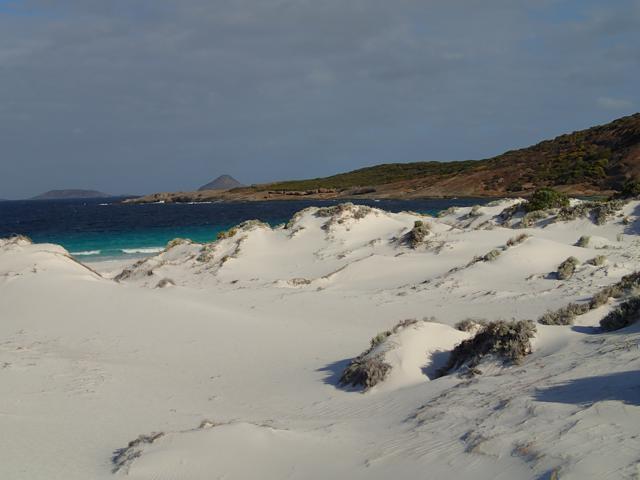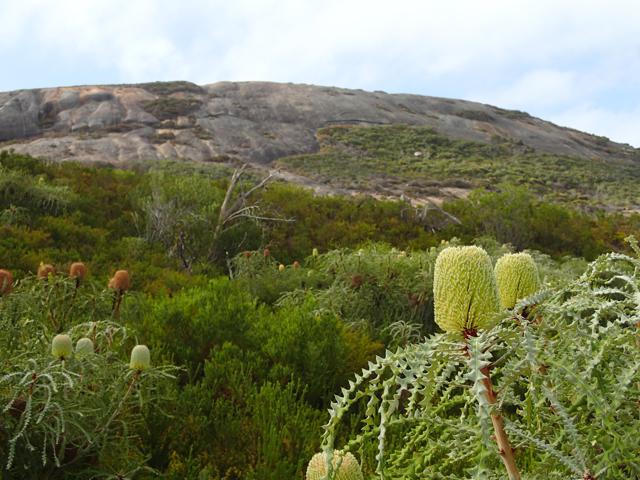Archipelago of the Recherche

VulcanSpirit
Richard & Alison Brunstrom
Sat 11 Apr 2015 14:20
| About 600nm due west across the Great Australian Bight from Cape Catastrophe (Flinders’ name) is the Archipelago of the Recherche; not the Recherché Archipelago, because this is an English translation of the French name given to it by D’Entrecasteaux when he passed by in 1792 - yet another indication of how close Australia and NZ were to becoming French, rather than British, colonies. There are about 1500 granite islands, mostly very small, spread over about 4000 square kilometres. It is tricky threading a passage through them nowadays with charts, GPs and radar. It beggars belief that Flinders managed to pass safely through, and even chart many of them. Here we are arriving on beautiful Middle Island; no other boats so no other people:  This is one of very few safe anchorages in the archipelago - a north facing bay protected from both swell and wind. Lovely. The island has an interesting history - a whaling station, a salt business, and in the 1830s home to notorious Black Jack Anderson, Australia’s only pirate. He was an African American whaler turned pirate, thought to be buried somewhere on the island after being murdered by his disgruntled crew. Here is Lake Hillier, the salt lake. Your correspondent is standing on a thick crust of evaporated salt. The pink colour comes from salt tolerant algae:  And it really is an astonishing bubble-gum pink as you can see from these aerial shots lifted from the web:  We were anchored in the bay directly in front of the lake  The clouds have parted and the sea looked so inviting that a snorkel was required. The participants kept very close to the shore in shallow water in the hope that no passing Great White would notice them. None did.  And fantastic it was to be swimming over lovely brown seaweed again instead of coral. Next stop Hammer Head on the mainland in the Cape arid National Park. And if the Australians think it’s arid ……. Here is VS in Victory Boat Harbour (just an ordinary bay with a big name), with Hammer Head in the background:  The crew are sitting on the top of ‘Mount’ Belcher, a granite lump like all the islands visible in the background. Note the bright white sand of which there is a lot hereabouts. A typical beach scene (note no footprints in the sand):  Southwestern Australia is a global biodiversity hotspot for flowering plants. Sadly VS is visiting in late summer rather than spring, but there are still some things flowering, like these gorgeous banksias (Mt Belcher in the background):  The next stop, just along the coast, was Esperance (“Hope”, D’Entrecasteaux’s other ship which sheltered from a storm there); the less said about Vs’s time there the better. The summer easterlies blow straight into the harbour there making anchoring downright dangerous - and we chose to arrive for Labour Day public holiday. Australia takes its holidays very seriously - the town was comprehensively closed, even both supermarkets (although one could still buy booze of course), so once cousin Mark was safely despatched on the Perth coach the ship set off to sea again, heading for Albany some 200nm to the west - still in a lovely fresh easterly breeze. |